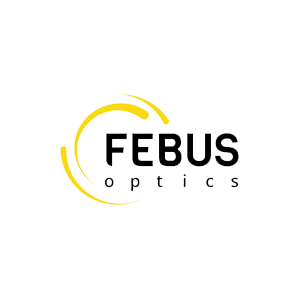Participants

EnagÁs
Enagás is Spain’s leading NG transmission company and Technical Manager of the Spanish gas system, with 50 years’ experience in the development, operation, and maintenance of gas infrastructures, including gas transmission assets, LNG regasification terminals and underground gas storage facilities. Enagás is accredited as an independent TSO by the EU and carries out its activities in 8 countries. Enagás is firmly committed to gas grid decarbonisation. Enagás is firmly committed to gas grid decarbonisation through the injection of renewable gases, such as H2 and biomethane, as new solution in the energy transition process and in the promotion of low-carbon economy. As part of its commitment to H2, Enagás participates in National and European research and innovation projects such as: GREENH2PIPES, Decarb, NewGasMet, SUN2HY and Green Hysland.
Enagás coordinates the Project, and also WP1. Moreover, it participates in WP4 for the use cases testing and validation, testing H2 sensors in real environments at a test bench in Enagás Metrological & Innovation Centre.

Febus optics
FEBUS Optics manufactures distributed optical fibre sensing systems: DTS, DSS and DAS. FEBUS Optics brings robustness, flexibility, and cost-effectiveness in all its monitoring solutions for real-time surveillance systems of different infrastructures. FEBUS Optics provides solutions in several markets: Structural Health Monitoring, pipeline integrity monitoring, landslides and intrusion detection, umbilical, power cable and risers life cycle assurance.
FEBUS Optics leads WP3 ‘Development of interpretative software’: FEBUS Optics uses distributed fibre optic sensing (DAS and DSTS). Moreover, FEBUS Optics works on a Human Interface Machine solution by merging data from DAS/DTS and FBG (from LUM) systems for H2 Leak Detection System (H2 LDS).

gerg
GERG (The European Gas Research Group), along with its member organisations, work with the European energy community to develop innovative solutions in the European gas infrastructure of the energy system. GERG is an association that represents R&D interests and coordinates corresponding efforts of its members on an EU level. GERG membership includes EU TSOs, DSOs, major NG suppliers, universities, and research institutes, as well as international standardisation organisations. Moreover, GERG has experience leading Dissemination and Communication activities in other EU projects.
GERG leads WP5 including D&C&E, clustering activities, and also oversees the interaction with AB.

GRTGAZ is a European leader in NG transmission and a world expert in gas systems. In France, the company operates more than 32,000 km of buried pipelines to transport gas from suppliers to consumers connected to its network. Within GRTG, the R&D Center for Energy (RICE) is the division dedicated to R&D in Research, Development, and Innovation for gas infrastructure. GRTG-RICE provides tested and proven industrial applications, as well as technical offers based on the development and the sharing of innovative ideas, scientific knowledge and technical expertise developed within the framework of the gas infrastructure, covering 3 main areas:
1) Integrity of metallic and non-metallic networks;
2) Improvement of operational performance, industrial safety and asset management of industrial infrastructure;
3) Analysis, odorization, detection and metering of gases.
GRTG-RICE oversees the Use cases testing and validation (WP4), testing H2 sensors in real environments using different gas (blend of NG/H2, pure H2) related to the use cases.
As leader of this WP, GRTG participates with the other partners in the definition of the different KPIs for each use case and will supervise the testing and evaluation of sensors.

FHa
FHa is a private non-for-profit technological centre promoted by the Regional Government of Aragón (Spain), other public bodies and private companies. Its team manages R&D projects in cooperation with regional, national and EU companies. FHa has been supporting the regional strategy for the uptake of H2 and fuel cell technologies, publishing the Hydrogen Master Plan in Aragón, and showcasing the whole H2 chain from production to the efficient use, from renewable sources. FHa also develops training from students to technicians and D&C activities. FHa oversees the Open Science in the Project and oversees the HRS use case in WP4.

Lumiker
Lumiker is an entity that has been developing advanced photonic sensors for biotechnology analysis, FBG and Brillouin critical location and distributed fibre optic solutions since 2010 and the first company in the world to develop the measurement of current utilizing the FARADAY effect with our own technologies. Lumiker provides condition monitoring solutions based in photonic and fibre optic sensors for critical asset management.
Lumiker oversees WP2 for the development of H2 detection sensors based in FBG technologies, to detect low and high level H2 ppms in Gas utility environments; and for the development of H2 FBG Interrogator.

Tecnalia Research and Innovation is the first private applied research centre in Spain and the 5th in Europe. In the field of Hydrogen, Tecnalia has been working since 2002 on the development of several technologies within the whole value chain of H2, including H2 generation, distribution, transport, storage, and end uses. Moreover, Tecnalia has a department for Hydrogen Technologies aimed at coordinating and developing specific technological solutions for the H2 value chain. Tecnalia has a wide experience in EU projects on the H2 field such as DEMCAMER, ReforCELL, FERRET, FluidCELL, BIONICO, HyGrid, etc. It is worth to mention that the collaboration between Tecnalia and Eindhoven University of Technology in the last years has created the H2SITE spin-off company, for commercializing Advanced Membrane Reactor able to produce high purity H2 on customer’s premises.
Tecnalia is involved mainly in WP2 for the development, optimization, and characterization of the specific sensing coatings for FBG H2 sensors. In addition, Tecnalia oversees the lab verification and validation of the novel sensor, and the results achieved will be used for the validation task at the different end-users (WP4).

